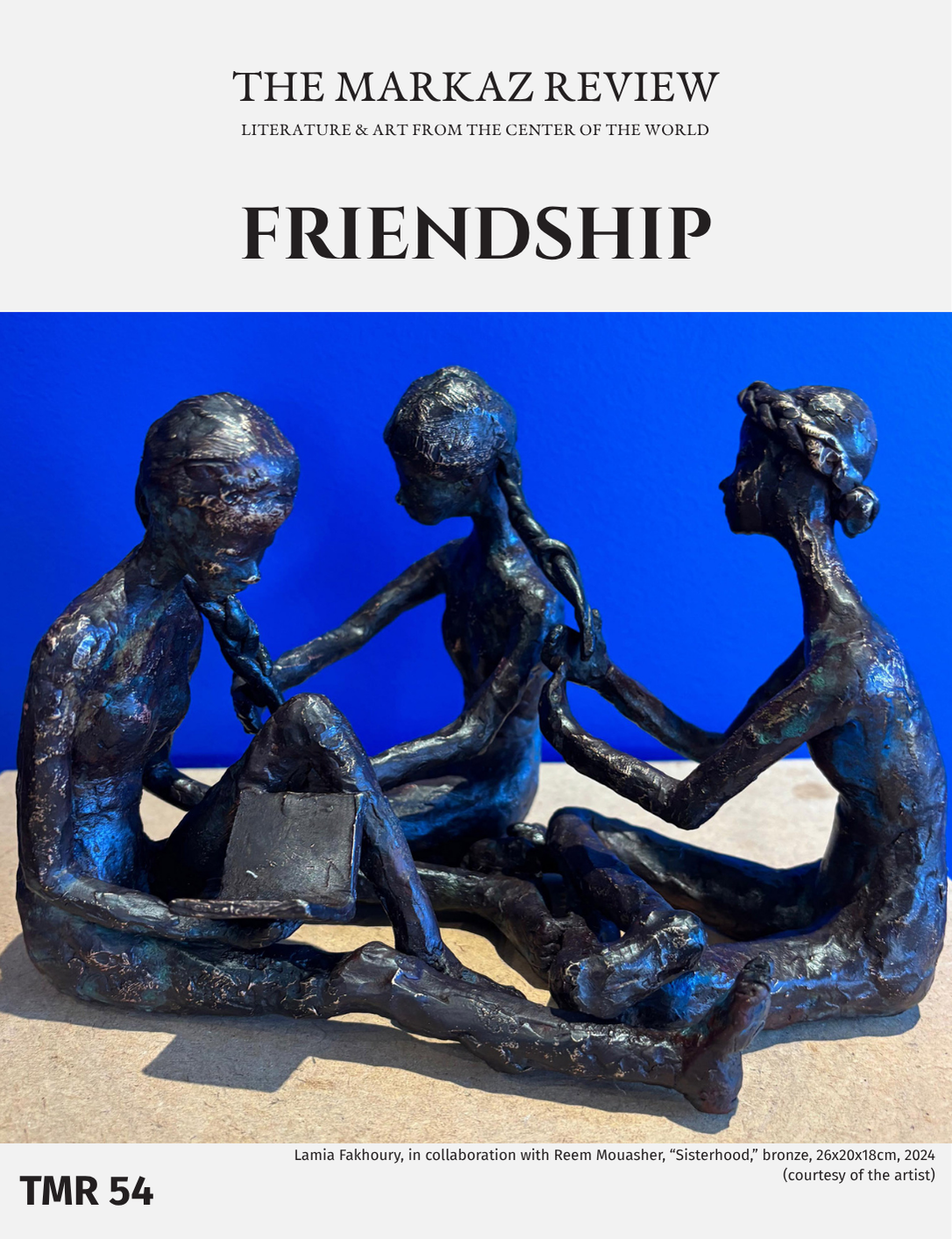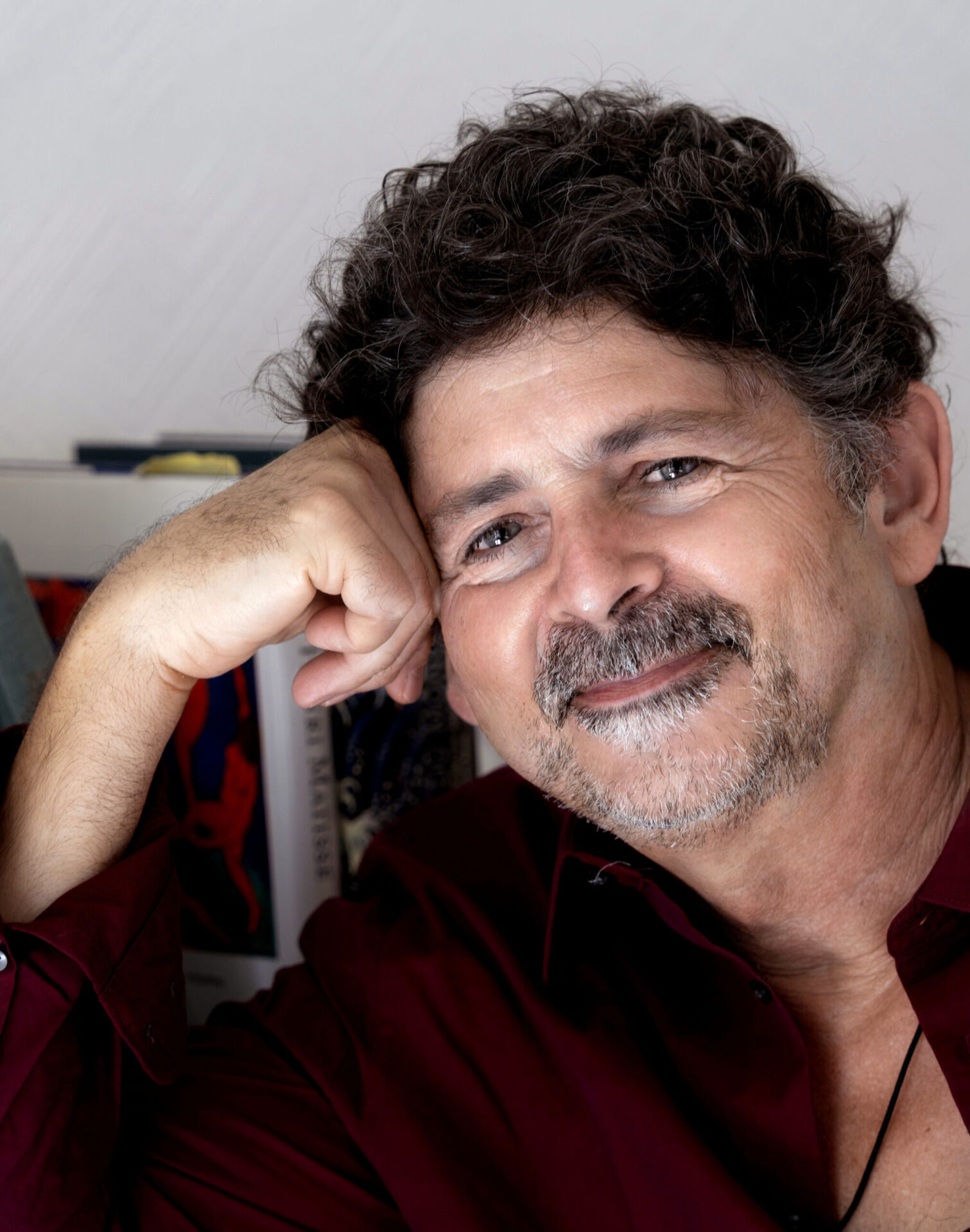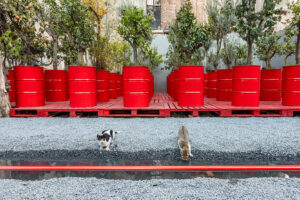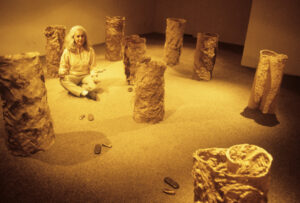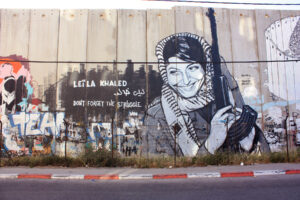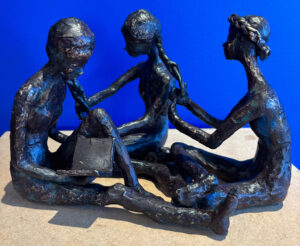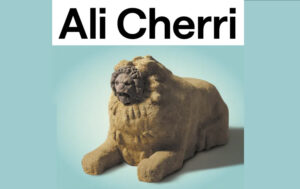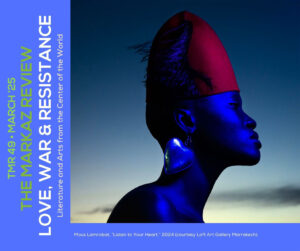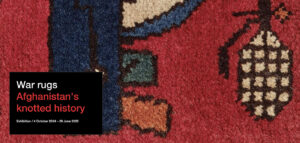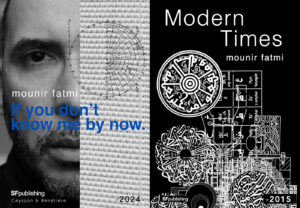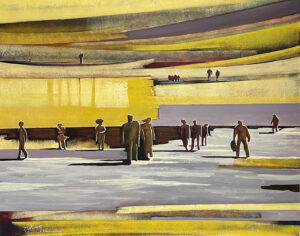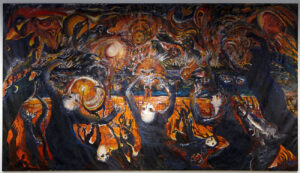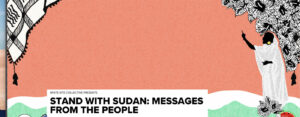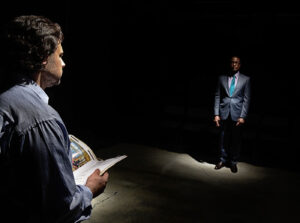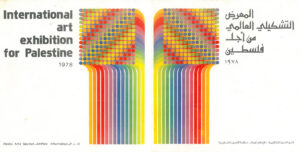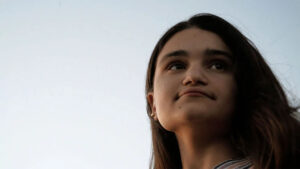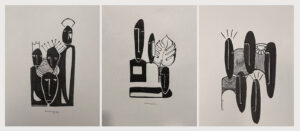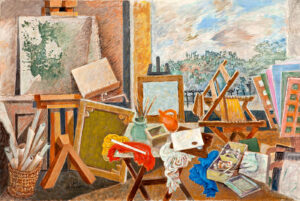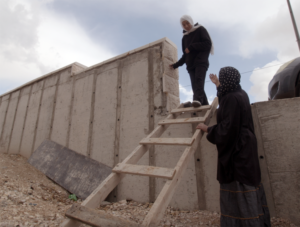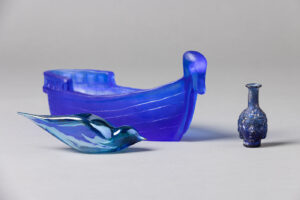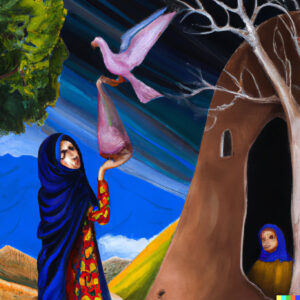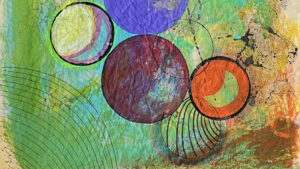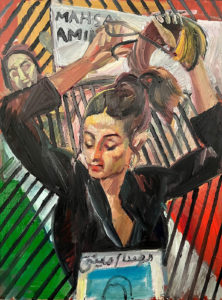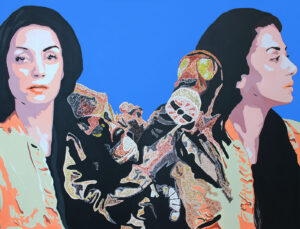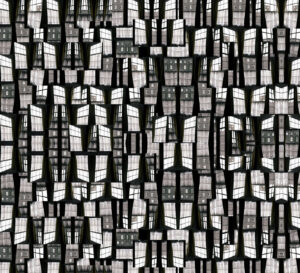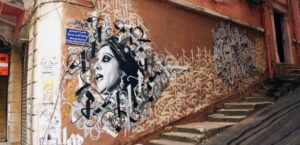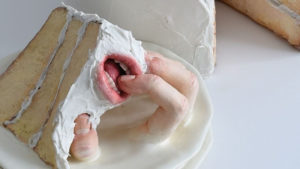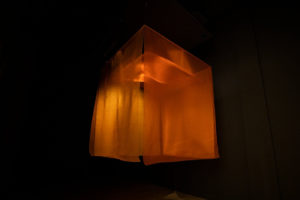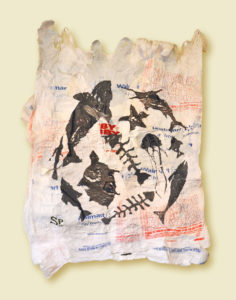The Featured Artist for TMR 54 • FRIENDSHIP is Jordanian sculptor Lamia Fakhoury, whose latest series is entitled Holding Space and who has an on-going creative collaboration with Jordanian painter Reem Mouasher. We caught up with her early in October in Amman.
Lamia Fakhoury is a Jordanian autodidact sculptor, with a hands-on approach to her work (pun intended). She sees each one of her pieces from its inception through molding, casting, welding, patina work, and everything in between; every sculpture is unique.
After several successful careers as a documentarian, a coffee roaster, and a legal arbitrator, Fakhoury made a life-changing decision to live life in “playing mode,” dedicating herself to push the bounds of her craft. She is the first sculptor in the region to cast life-sized hollow bronze sculptures. To achieve this feat, Lamia experimented tirelessly, collaborating closely with industrial foundries in Amman and their heavy duty equipment.
Her work is both playful and poignant, often exploring the way human bodies express emotion. Born in 1967 in Jordan, she received her bachelor’s degree in communication from Boston College, USA in 1989, then her Master in Law (llm) from the University of London in 2017. Lamia taught herself to sculpt from a book in 2005 and become a full time sculptor in 2017. She then had her first group exhibition in 2018 and joined several exhibitions until her duo exhibition in 2021. Her first solo exhibition was Salalem at Dar Al-Anda Gallery, in March 2023, and a second in September 2025. Rather than reflecting on her life experiences, Lamia Fakhoury molds art that makes her feel good and hopes it does the same for those who take it in.
Of her piece “Sisterhood,” she says it “is about the precious moments we spend with the people closest to us, whether they are blood sisters or life sisters. The piece is a collaboration with Reem Mouasher, with whom I often work. It was sculpted using the direct wax method; there is no mold of this sculpture, it is a one of a kind, like all my sculptures, a single edition.”
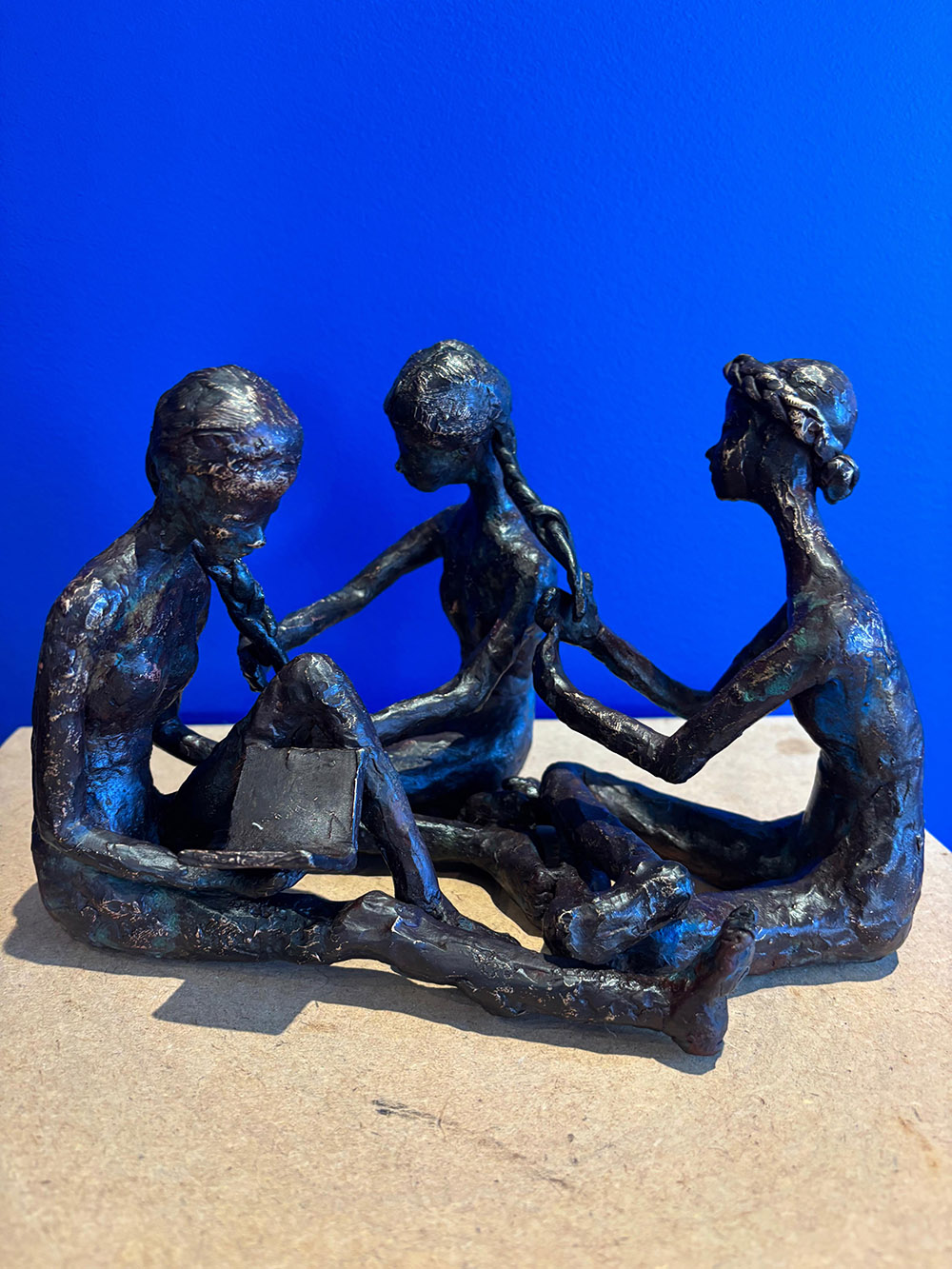
“Sisterhood” was cast in bronze in the artist’s backyard using a homemade furnace. She mostly learned the Ceramic shell method of lost wax casting from books, and trial and error, lots of errors. The patina on this bronze was made using brushed chemicals and torch heating, and finally the artist applied a wax layer to protect the patina.

Interview with Lamia Fakhoury
Your journey to sculpture seems long and circuitous.
How did you get there, what were the signposts?
Besides reading, my only interest growing up was basketball. I was very serious about it and led the national team as a teen. However, I seriously injured myself freshman year in college, and that was the end of that.
Since, I was always looking for something to fill that void. In 2005 I bought a book and a slab of clay and started teaching myself to sculpt. Sculpting remained a hobby until 2016, I got my LLm from University of London and although I initially toyed with the idea of setting up a mediation center, I quickly realized, after a succession of family tragedies, that I was done adulting. I then started playing full-time with clay, and initially developed an interest in metals as a way to make my sculptures unbreakable.
Fittingly, my first collection was titled Readers, and was part of a group exhibition at Nabad Gallery in 2018. The collection was cast in car part foundries in Jordan, using sand casting technique. Because sand casting means most often metal imperfections need to be reworked using heavy duty tools, I wanted to explore the lost wax method of bronze casting, and since that is not available in Jordan nor in the region, my friend Reem and I signed up for a three day course in the UK, during which we studied how to cast miniature bronze sculptures. Later I scaled the casting to cast the first life size bronze hollow sculpture, which was also a reader that Reem and I sculpted in clay.
Yes, you’ve worked with painter Reem Mouasher on “Sisterhood,” and other sculptures. I know her work as a painter on canvas and so am wondering how that came about. Can you talk more about the collaborative process?
I’ve collaborated closely with Reem Mouasher on many projects, including #Kurka3a, a project that aimed to engage with the public to promote sculpture. We’ve presented three editions of the Kurk3a project. The first consisted of 100 aluminum cast turtles, the second 200 colorful plaster turtles. The project involved hiding the turtles in old Amman and providing clues on social media. People seemed to engage quite well and actually competed and posted their hunting videos online.
The third edition of the Kurka3a project was ten much larger turtle sculptures that were showcased during my solo exhibition at Dar Al-Anda in 2025. Each was made of recycled metals and painted mostly by Reem.
For the most part, creating art tends to be a solitary endeavor, or at least, one artist is responsible for and signs the work, even if assisted by multiple helping hands. Has working with Reem been a way to, I don’t know, go beyond the ego and the sort of solitary nature of making art?
Certain sculptures that Reem and I made together were true collaborations in the sense that each of us would work on a piece for a while and throw it back to the other. We found that in this way, the work not only improves but stays fresh and new to both of us. To do this kind of collaboration, there has to be trust, admiration, and friendship. And the egos have to take a back seat. All those themes were very much a part of the Holding Space series.
It’s true that making art is usually a solitary experience but sometimes it really helps to bring in an artist friend and see where things go!
In fact, in contemplating these sculptures, they seem to celebrate friendship and community, they are about human solidarity, whereas when we think about some of the world’s most famous sculptures, they are frequently sole figures, and solitude emanates from them. Not true here.
Contrary to most artists, my sculptures are a reflection of a better version of life than reality, in the hope that they uplift people who experience them in the same way they uplift me. Holding Space, my newest collection, celebrates collaboration and friendship, and celebrates making time to be and grow with people.
—Jordan Elgrably
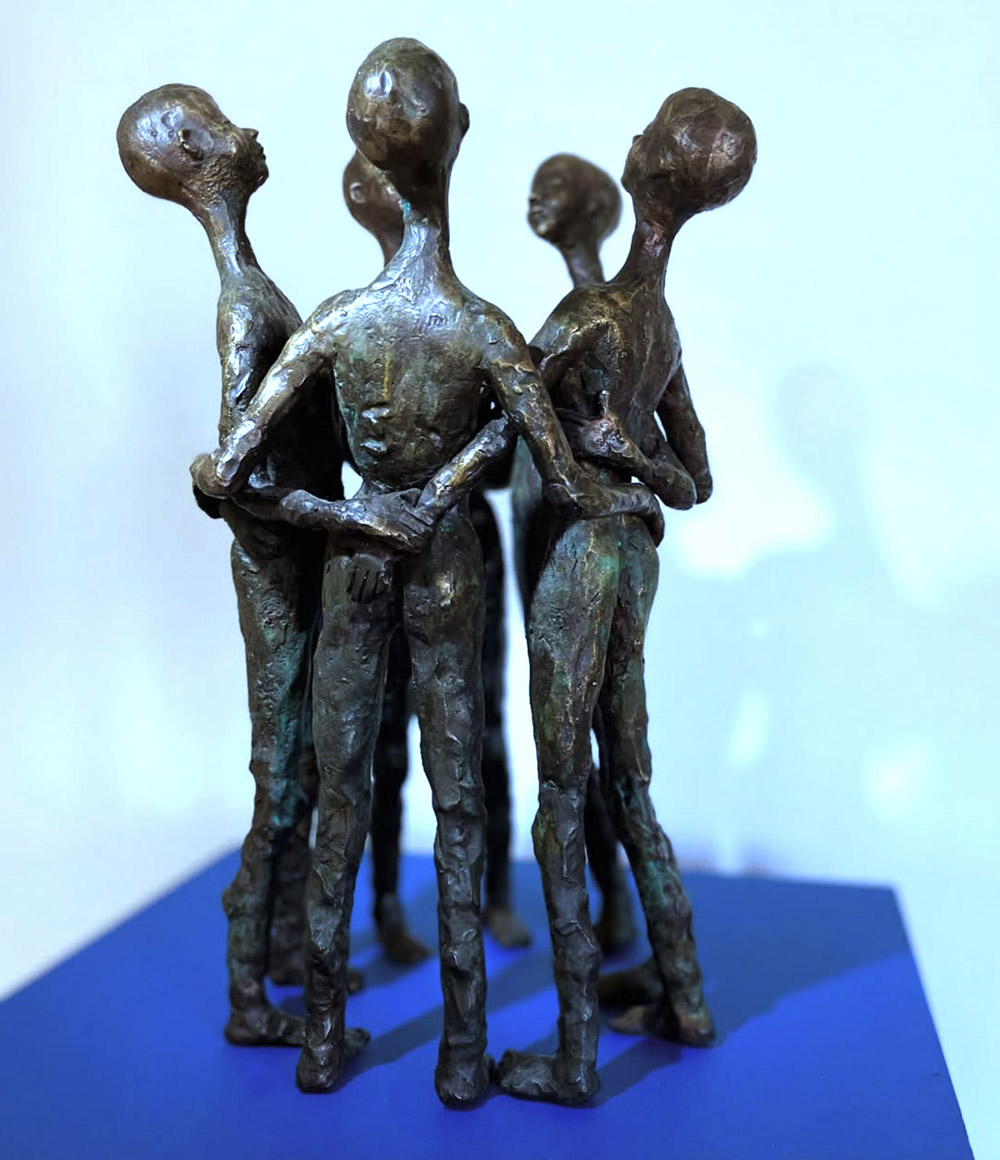
Holding Space for someone is so much more than being there physically, or even lending an ear; as you feel heard, supported and even lifted as a result. “Holding Space” was sculpted using the direct wax method; there is no mold of this sculpture, it’s a one of a kind like all my sculptures, single edition. –LF
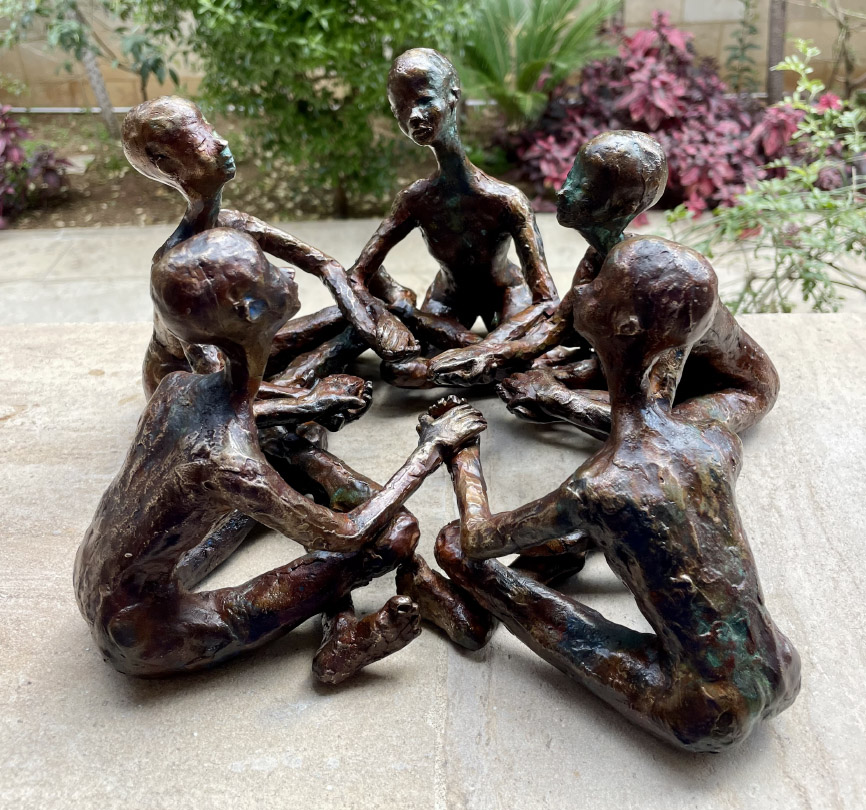
This bronze sculpture was inspired by the people in our lives who support us, hold space for us, have our back, and love us unconditionally. The circle is unbreakable, infinite and unending. “Circle of Trust” was sculpted using the direct wax method; there is no mold of this sculpture, it’s a one of a kind like all my sculptures, single edition. Below is a close-up on the hands in the circle. –LF
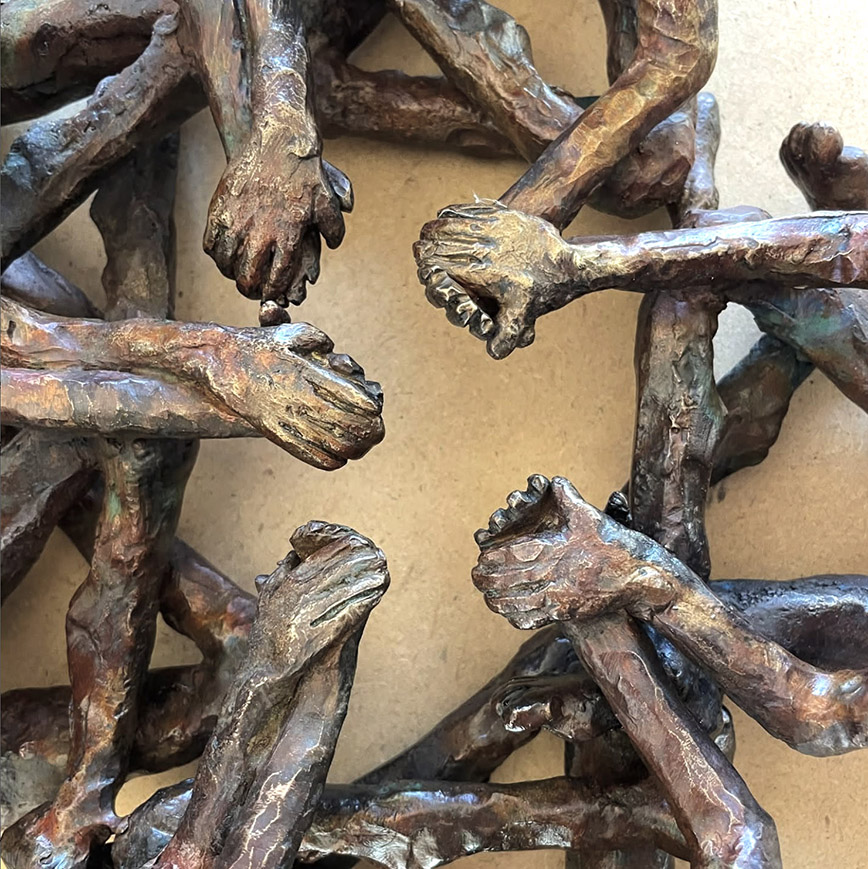
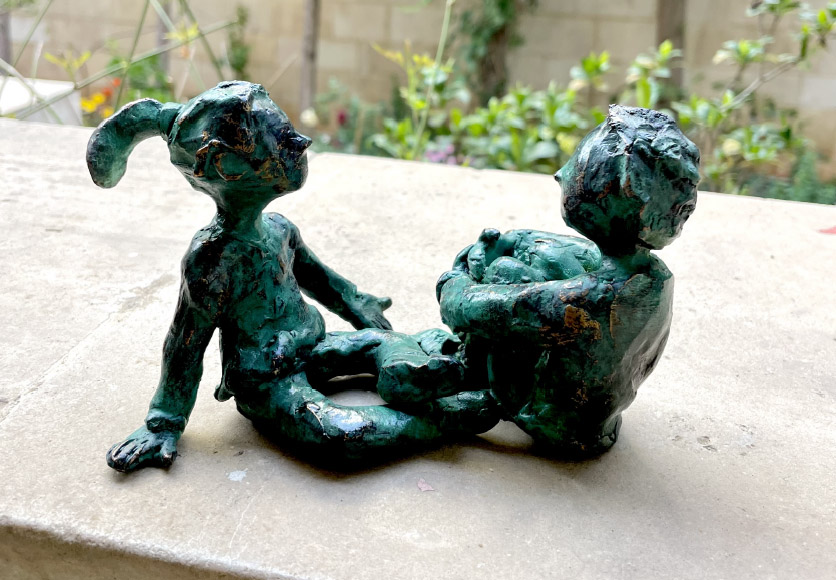
A conversation with a friend or family member is often the way we understand the world. “A Chat” was inspired by this kind of conversation. This sculpture was sculpted using the direct wax method; there is no mold of this sculpture, it’s a one of a kind like all my sculptures, single edition. –LF
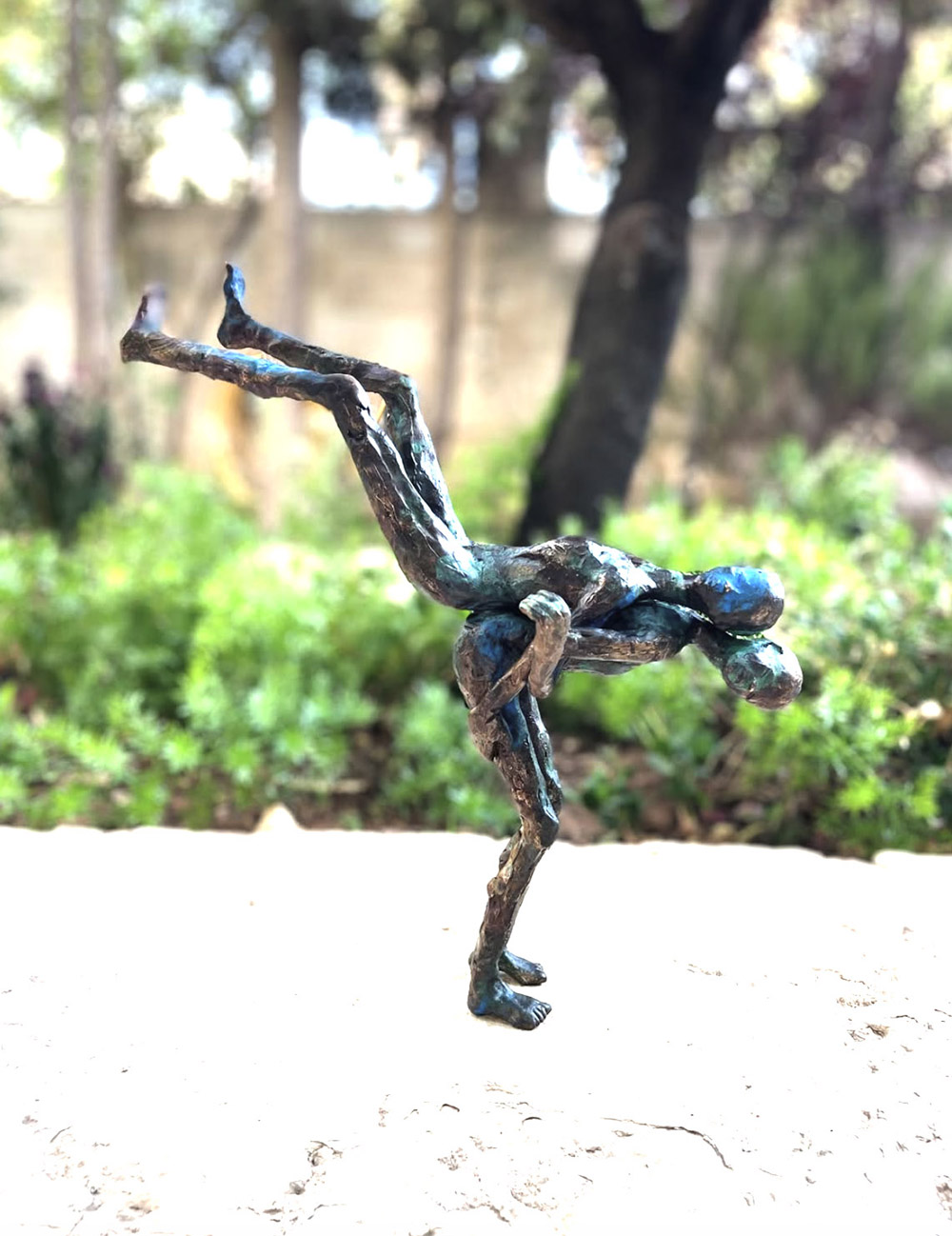
We used to play this game when we were little, that someone said was called Ana alnahle w inti aldaboor, that always made me think of trust. –LF
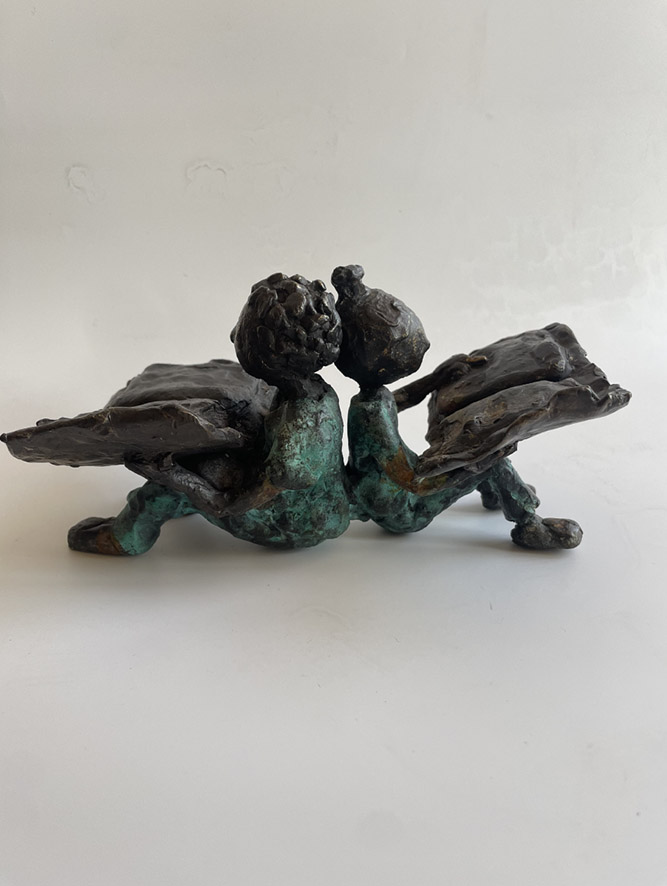
Reading was a big part of my life growing up. “Buddies” was inspired by the joy of reading. –LF
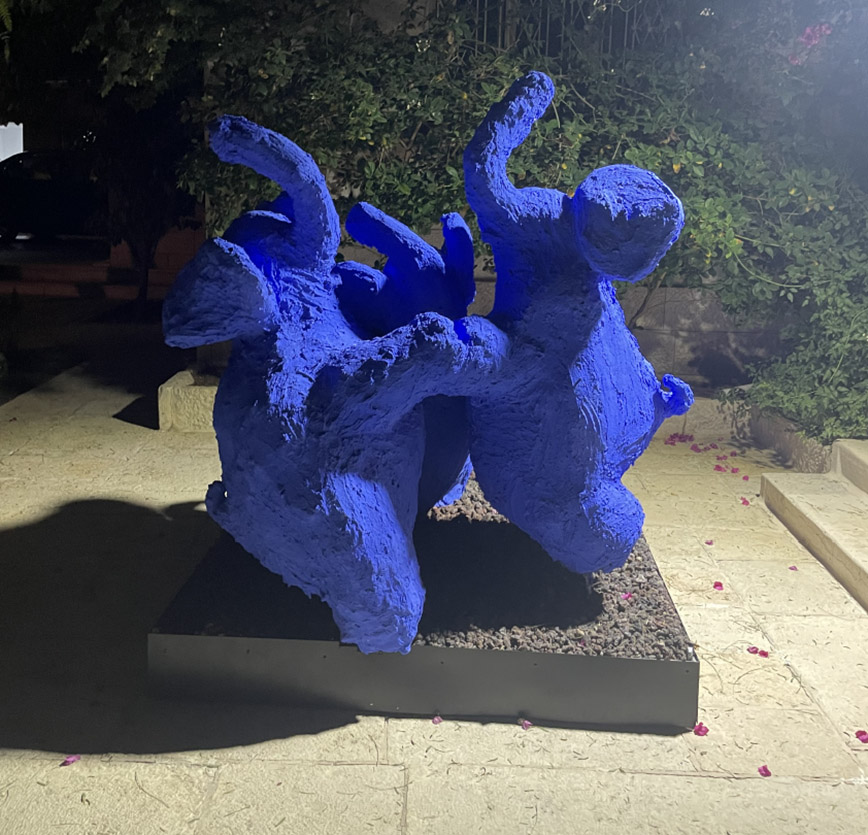
My first experience with elephants took place some 20 years ago in India; on my car journey to the Ayurvedic center, I was warned that Kerala was witnessing mass riots by the poverty striken population, but instead of the violence I expected to encounter I was faced by groups of dancing and singing people, mostly on top of beautifully painted elephants all over the streets!
I have repeatedly sculpted happy dancing elephants, and “Levity” is no different. Looking at this sculpture that fittingly weighs 500kg brings me immense joy. “Levity” is made from an iron armature on an iron base, the basic structure was then created using chicken wire, and finally hand sculpted using a special water-resistant concrete mix, blended with an ultramarine pigment. –LF




